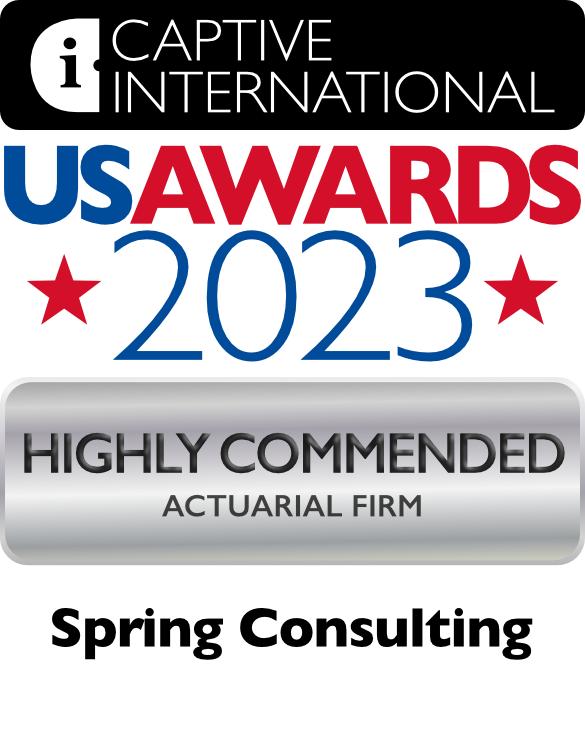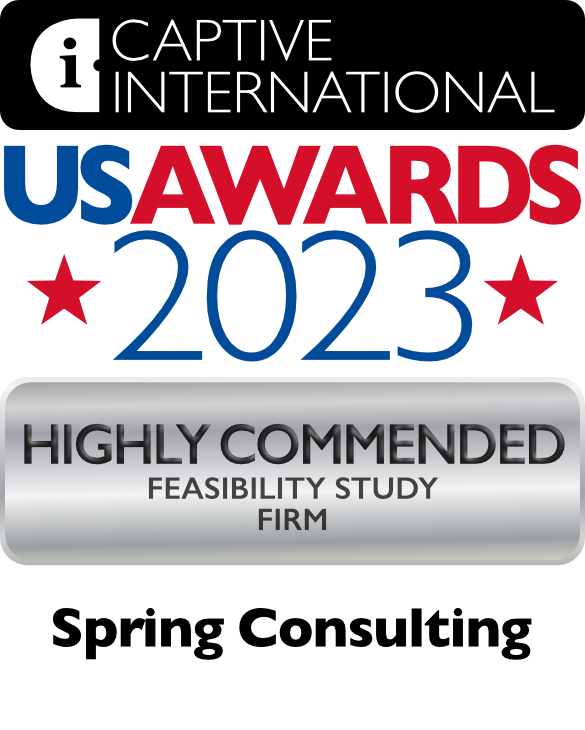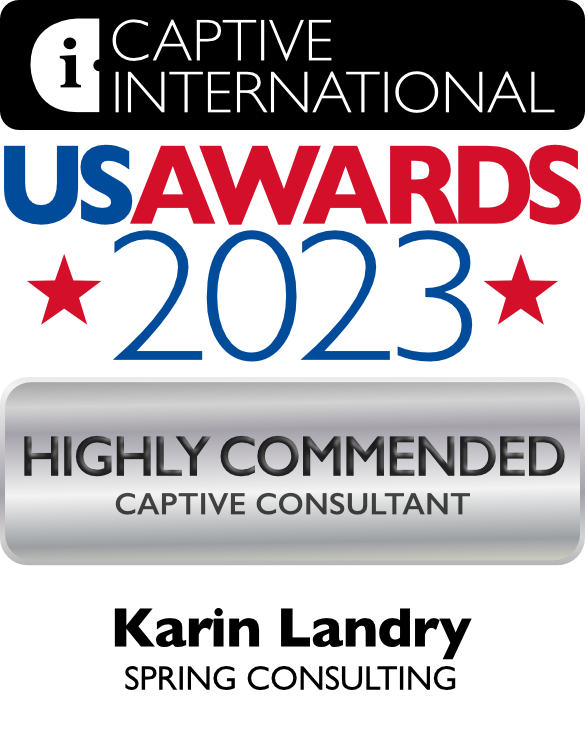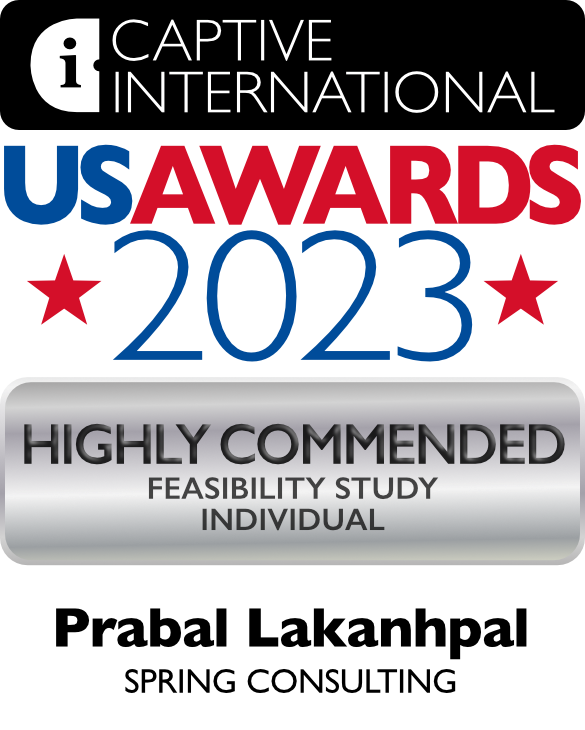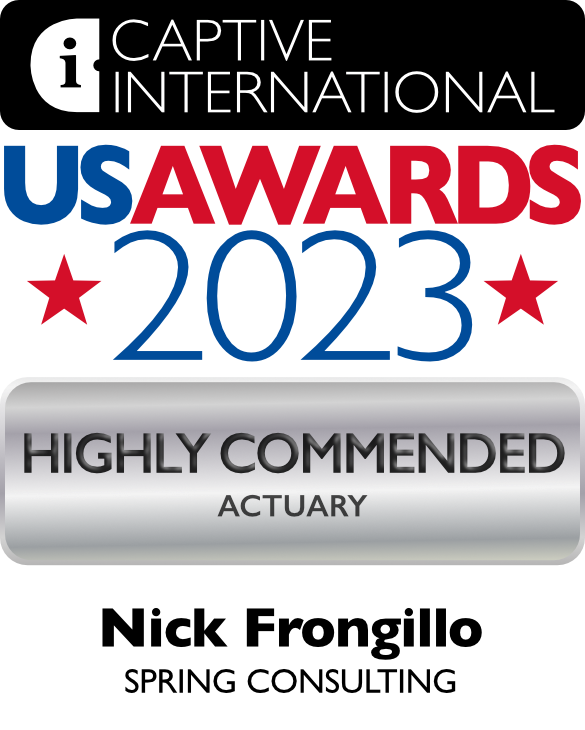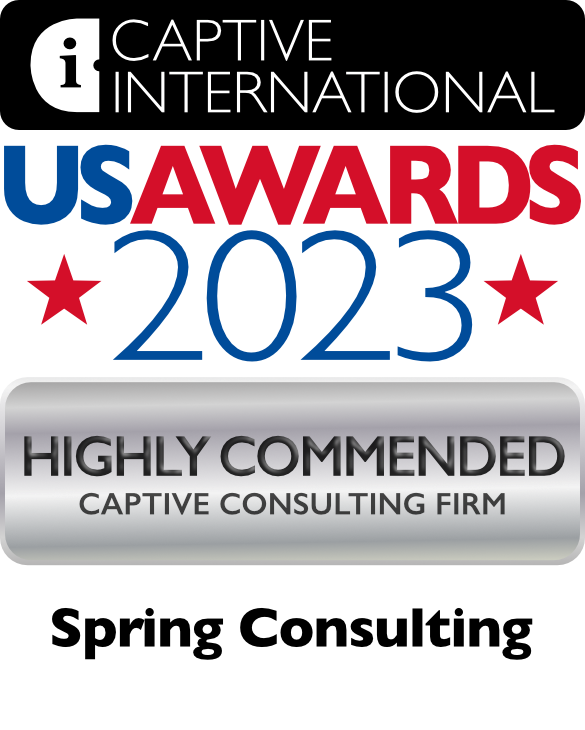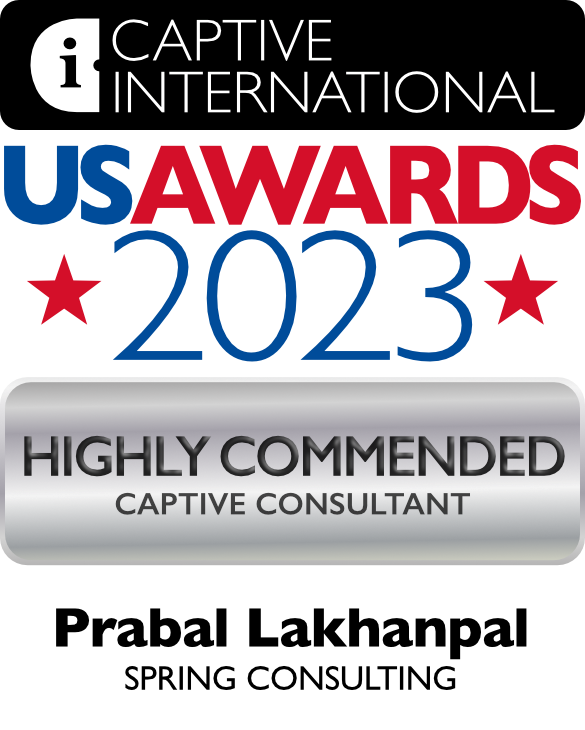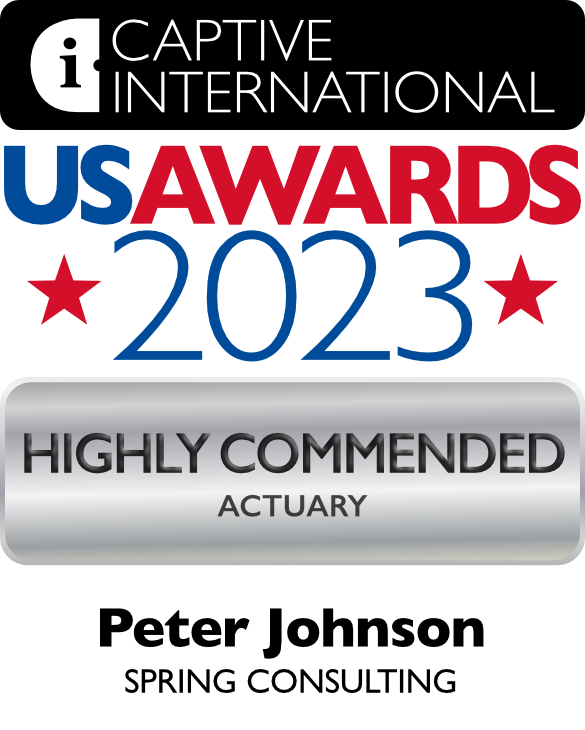Current State
Weight loss medications, Glucagon-like peptide-1 receptor agonists (GLP-1RA) s, have risen in popularity beyond anyone’s imagination and there is no sign 2024 will be any different. Endorsements by top Hollywood celebrities, aggressive and compelling consumer marketing, new direct-to-consumer options, and research demonstrating their benefits related to both heart and kidney disease, have left employers wondering if they should rethink their coverage choices.
Many employers have seen the impact on their budgets, adding on average $15,000 annually per patient in pharmacy costs. It is common for employers to focus only on short-term impacts and fail to connect the benefits of weight loss to long-term health care costs and goals. On average, patients who are overweight may incur healthcare costs that are 50% higher than someone of a healthy weight. Is it time we shift our thinking and focus more on the long-term? Is it possible that there is a subset of your population that would benefit from these medications? Would you reconsider your position if the right safeguards were in place?
The Bigger Picture
Did you know?1
- The National Institute of Diabetes and Digestive and Kidney Diseases, reports more than 42% of American adults are obese or severely obese, a rate that has almost doubled since 1980.
- Obesity is second only to smoking as a preventative cause of death in the United States.
- Every 5-point increase in BMI results in a 32% increase in risk of developing heart failure.
The American Medical Association (AMA), the World Health Organization (WHO) and other medical boards have recognized obesity as a chronic disease by for well over a decade. It is a complex metabolic condition that is impacted by genetics, behavior, and environment. Obese individuals have too much fatty tissue stored as energy within their bodies and their ability to change the body’s response to excess fatty tissue is often unsuccessful despite great efforts. 1 2 3
Obesity’s role in the development and/or progression of many chronic diseases, such as type 2 diabetes, hypertension, cardiovascular disease, kidney disease, stroke, sleep apnea, osteoarthritis, and certain types of cancer, is well documented. A person with obesity has an 80-85% risk of developing type 2 diabetes, and cancers associated with excess weight contribute to 40% of all cancers. It is easy to overlook that obesity not only impacts the physical body but also a person’s mental health.
The CDC reports that more than 50% of adults diagnosed with moderate to severe depression who were also taking an antidepressant were obese. Overall, 43% of adults with depression were obese compared with 33% of adults without depression, and women with depression were more likely than men to be obese. This was true across all age groups among women and was also seen in men aged 60 and older. 3 4
To Include or Exclude
As we enter 2024, the demand for weight loss medications continues and is anticipated to increase since much of 2023 was plagued with drug shortages. Despite these shortages, the average employer saw double digit increases in the GLP-1RA category which includes drugs for both diabetes and weight loss. Many employers continue to struggle, unable to justify unrestricted access and coverage for their members while striving to offer benefits that provide value and fair access.
As employers look for innovative ways to combat soaring healthcare costs, re-evaluating coverage of weight loss medications to a subset of members could be a critical piece of the puzzle. The International Foundation of Employee Benefit Plans (IFEBP) reports that 22% of employers in the U.S. currently cover prescription drugs for weight loss, and 32% offer weight management programs. Another survey showed up to 42% of employers were revisiting coverage for 2024 and beyond. 5 6 3
This year started off with somewhat of a curveball in this area, with Eli Lilly announcing LillyDirect, a direct-to-patient portal, allowing some patients to obtain its newly released drug, Zepbound (tirzepatide) for as little as $25 a month. LillyDirect uses the telehealth platform, FORM, where patients reach independent telehealth providers who can complement a patient’s current doctor or serve as an alternative care option. This news has been received with mixed emotions. Many obesity experts feel this is a long overdue service that improves access and addresses affordability concerns. Others feel this is another move by manufacturers to circumvent health plan sponsors and improve their market share. Many are calling for transparency between telehealth providers and the pharmaceutical company to rule out any conflicts of interest. 7
If you are exploring adding weight-loss drug coverage to your plan, a critical first step is to ensure members are educated about these drugs, essentially demystifying the media hype. The truth is these drugs are expensive, have side effects, and cannot do the job alone. Inadequate education regarding the side effects and how to manage them has caused many people to stop therapy, resulting in wasted healthcare dollars. The medications must be part of a comprehensive program that highlights the importance of healthy food and physical exercise. Members need to understand their responsibilities and how they will be held accountable for demonstrating their continued commitment to the plan. It has been demonstrated that those who stop the drugs regain, minimally, 75% of the weight because long-term behavioral changes and/or healthy eating habits did not form. 8 2 9 10 3
Employers also need to find ways to monitor their financial interests, such as:
- They must be active participants in designing coverage criteria and ongoing monitoring parameters.
- They must ensure they create a comprehensive approach, complete with a robust clinical review and ongoing monitoring at frequent intervals to evaluate a member’s response to therapy. As part of that, employers need to recognize the importance and impact that social determinants of health and health equity have when discussing weight.
- Determine ways to implement opportunities for members to access healthy food choices and physical activity and add additional wellness incentives to your benefit offerings.
- Be sensitive to the views/ or needs of your employees; do not make the out-of-pocket expenses so significant that they essentially restrict access.
- Finally, monitor your financials closely, request frequent in-depth reporting, and hold your PBM accountable for ensuring appropriate coverage/monitoring, access to competitive pricing, rebate incentives and formulary placement.
Conclusion
Ultimately the choice to cover these medications is an organizational decision, but it’s critical to have all the information necessary to make this decision, starting with a robust view of your population demographics. With high rates of obesity for most health plan sponsors, a prudent and thoughtful approach to expanding weight-loss coverage will be required. Attempts like this to tackle the obesity epidemic could produce long-term savings with lower overall healthcare costs, prevention of progression of existing diseases, and, most importantly, a better quality of life and employee experience. It has also been demonstrated that many people would remain at a job solely to retain coverage if offered and approximately 44% of people surveyed reported that coverage of these medications could be an important decision point in whether to accept a new position. 11 4 12 13 14 6 8
No matter your decision on offerings, the more you can offer through communications and education will help your plan participants make informed decisions and understand their role in achieving and keeping weight off. To realize tangible results, all parties must be committed. If you could use guidance around weight loss drug strategy or would like a clinical pharmacist to assess your population and needs, please get in touch with the Spring Team team.
1 https://www.cdc.gov/obesity/data/adult.html
2 Obesity Statistics. The European Association for the Study of Obesity.
3 Public Health Considerations Regarding Obesity. StatPearls
4 https://www.hsph.harvard.edu/obesity-prevention-source/obesity-consequences/health-effects/
5 https://ir.accolade.com/news-releases/news-release-details/glp-1-coverage-employer-plans-could-nearly-double-2024
6 https://www.cdc.gov/nchs/products/databriefs/db167.htm
7 https://investor.lilly.com/news-releases/news-release-details/lilly-launches-end-end-digital-healthcare-experience-through
8 https://icer.org/news-insights/press-releases/icer-publishes-evidence-report-on-treatments-for-obesity-management/
9 https://www.webmd.com/diet/obesity/obesity-health-risks
10 https://www.npr.org/sections/health-shots/2023/01/30/1152039799/ozempic-wegovy-weight-loss-drugs
11 https://jamanetwork.com/journals/jama/fullarticle/2812936
12 https://www.ama-assn.org/press-center/press-releases/ama-urges-insurance-coverage-parity-emerging-obesity-treatment-options
13 https://www.milliman.com/en/insight/payer-strategies-glp-1-medications-weight-loss
14 https://www.niddk.nih.gov/
In a recent article published by Yahoo Finance, Reliance Matrix was ranked as the most popular absence management provider according to Spring’s annual 2023 benchmarking survey. Check out the full article here.
In a recent article published by BusinessWire, Reliance Matrix was ranked as the most popular absence management provider according to Spring’s annual 2023 benchmarking survey. Check out the full article here.
Spring’s Senior Vice President, Prabal Lakhanpal will be presenting at Business Insurance’s World Captive Forum on January 25, 2024. His session will cover new emerging risks and provide tactics for improving captive risk distribution frameworks. You can find the full update here.
As we enter 2024 in an interesting economic and workforce environment, benefits professionals are once again looking to get creative with their offerings and ensure that they align with cultural and corporate objectives as well as budget.
There is one benefit in particular that, while not new, has been gaining traction over the last few years and we expect continued momentum and adoption in 2024: lifestyle spending accounts.
What is a Lifestyle Spending Account?
A lifestyle spending account (LSA) represents a range of flexible benefits accounts that employers can offer to employees as funds toward eligible expenses related to health, wellness, and personal needs and interests. The employer defines what an LSA can be used for, with many companies including pet care or services, travel, leisure activities, and home improvement within their list of qualifying expenses. In this way, they cover a much broader spectrum of needs beyond those that are applicable within a Flexible Spending Account (FSA) or Health Savings Account (HSA).
Pros and Cons
Many employers are considering or implementing LSAs for their employees because they provide the following key advantages:
- Entirely customizable based on what would make a positive impact on your unique employee base
- Allow for enhanced diversity, equity and inclusion (DEI) within your benefits program
- No budgetary surprises: employers decide on what they will contribute and if employees do not take advantage of the LSA, that money will not be spent, and the employer dictates whether or not funds can roll over year over year
- Generally not a big ticket item; contributions typically range from $500 – $2,000 per employee per year1
- Ability to design an LSA based on wellbeing goals that could contribute to a healthier, more productive workforce
- Demonstrates compassion and a commitment to employees that can lead to increased engagement, recruitment, and retention
- Can lessen the need for multiple point solutions which can create significant administrative burdens
- Relatively simple and fast to set up
LSAs aren’t for every company, though. Some factors that might indicate an LSA isn’t the right path are:
- Awareness: as with every facet of a benefits program, the employer will need to be thoughtful in communicating the LSA option
- Possible duplication: depending on your health plan, point solutions, and other wellness programs, you may need to be careful in designing an LSA that is not redundant to other offerings
- Compliance considerations: while typically not the case, legal and tax implications (e.g., ERISA) may exist for LSAs that account for certain health expenses
- LSAs are a taxable benefit, unlike pre-tax options like 401(k) plans, HSAs, and health insurance, so there will be different types of financial ramifications for employees who participate
Looking Ahead
LSAs are becoming more and more popular; a 2023 Benepass study shows that 51% of companies are offering this benefit, as compared to 37% in 2022. Optum’s 2022 Financial Lifestyle Benefits Research found that 37% of benefits professionals were planning to add to or update an LSA in the coming year. At Spring, it has been a topic of interest for many of our clients as we refine our strategic benefits plans and consider program enhancements. If you are interested in an LSA but need guidance around implementation, processes and best practices, please get in touch and we would be happy to help you explore the option.
With winter quickly approaching, the Cayman Captive Forum last week provided a great escape from the cold weather and a fantastic excuse to visit a tropical paradise. As Cayman is the second largest captive domicile (behind Vermont), it is more than a vacation spot; a rewarding opportunity to address top trends and practices in the captive insurance and risk management space. Here are some driving topics of interest this year:
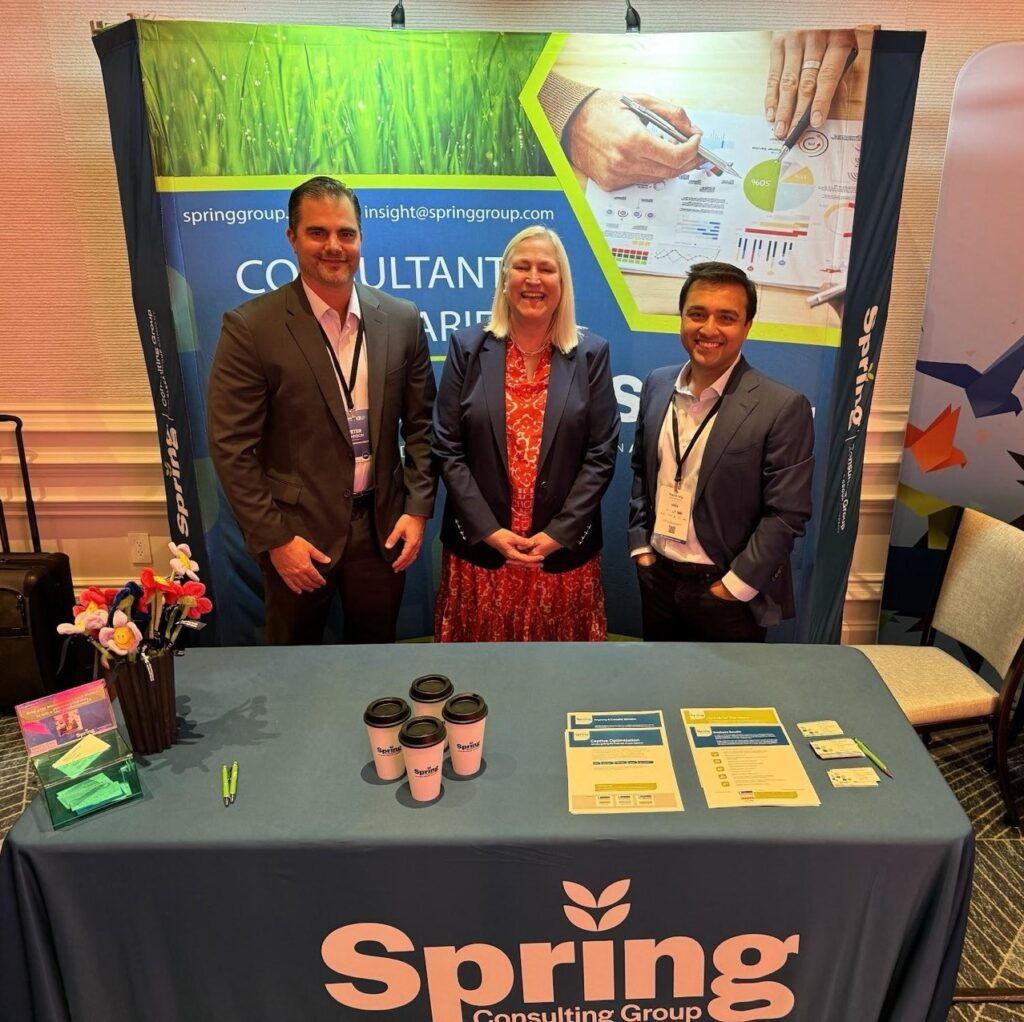
AI and Risk Management
As concerns surrounding artificial intelligence (AI) dominate headlines and conversations worldwide, it was only fitting that it was a popular topic of discussion this year at Cayman. AI holds an interesting position in risk management, in that it can be used to help identify risks and create efficiencies; but also can create vulnerabilities in cyber and digital. Here are a couple of innovative sessions on AI’s impact on risk management:
– During the presentation “AI and your Captive,” beverage distributor, Southern Glazer’s Wine and Spirits explained how they were able to optimize their captive using AI and machine learning tools.
– In the eye-catching session, “Chat-GPT/AI Concerns in Claims/Risk Settings,” risk experts reviewed how AI is being used in cyberattacks, especially towards healthcare organizations. They also examined the recent emergence of AI chatbots in healthcare.
Cyber Risks
This year there have been over 327 healthcare data breaches reported to the US Department of Health and Human Services, involving more than 40 million patients’ data1. Cyber is a top priority for risk managers, especially those working for healthcare employers. Here are some highlights:
– The session, “Complex Cyber: Renewal to Claims” looked at current cyber insurance market trends for healthcare organizations and recommendations for protecting patient information from adverse incidents.
–With emerging technologies, cybercriminals have more tools than ever at their disposal. A presentation titled “Cybersecurity Trends and Tomorrow’s Challenges: Future-Proofing Your Organization” highlighted strategies to combat evolving cyber threats.
Risk Face by Healthcare Organizations
As Cayman is the largest domicile for healthcare organizations2, healthcare-related risks receive a lot of buzz each year, and 2023 was no exception. Healthcare organizations face unique challenges, some of which include:
a) Social Risks
Within the healthcare sector, risk management teams must balance distinctive social and legal issues on top of day-to-day operations. Some noteworthy sessions included:
– The presentation, “The Impact of Social Inflation on Captives and Others,” reviewed shifting trends in medical professional liability and explored how risk management teams can better understand changing social influences and the risks tied to them.
– One engaging session entitled, “Reproductive Care Post-Dobbs: Protecting Patients and Providers,” provided insights into how a healthcare organization was able to identify emerging risks associated with reproductive care.
b) Workplace Safety and Medical Malpractice
With unique risks come unique coverages. Healthcare organizations often must turn to specialty insurers and experts to evaluate risks associated with workplace violence and medical malpractice. These topics were widely discussed during the conference:
– In the one-of-a-kind session, “Active Shooter Workplace Violence – Claims Coverages Consequences,” the Captive Owner from the University of Pittsburgh Medical Center drew takeaways from their mass shooting over a decade ago.
– A session on “Implementing Structured Communication Processes to Avert Malpractice Claims & Reduce Patient Harm” spotlighted how nearly half of malpractice claims come from miscommunication and provided suggestions on streamlining communication.
– The final session of the conference “People Behaving Badly” reviewed a high-profile case where medical providers harmed patients and professional liability considerations for healthcare companies when disciplining or terminating staff.
c) Other Priorities
In addition to the topics discussed above, some other notable healthcare industry-focused sessions included:
– As virtual care continues to be popular post-pandemic, a group of risk experts discussed recommendations for “Managing the virtual practice of medicine in multiple states & the unique risks associated with this practice.”
– In a virtual session, “A total guide to total cost of risk,” an actuary and captive consultant discuss how to properly calculate and identify Total Cost of Risk (TCOR) and suggestions on how to adjust to changes in TCOR.
The Cayman Captive Forum was a strong finish to the year in terms of lessons learned and connections made. The farewell beach party is always an added bonus! We welcome this chance to reflect back and look forward to what 2024 has in store for the captive space.
1 https://www.urologytimes.com/view/health-care-cyberattacks-soaring-in-2023
2 https://caymanintinsurance.ky/about/
As Seen in Captive International’s Cayman Focus 2024
Total cost of risk (TCOR) is a buzzword in the insurance space, but it is a metric that carries significant operational weight, and can mean different things depending upon the organisation. There is no tried and true approach to TCOR, but we have gleaned valuable insights after consulting on the topic across a range of companies and risk profiles.
Leveraging those insights, we are sharing here a foundation for framing TCOR at your organisation, keeping in mind common dos and don’ts we have come across.
What is TCoR?
It’s important to start at the beginning. While there are various definitions out there, the International Risk Management Institute (IRMI) states that TCOR is the sum of all aspects of an organisation’s operations that relate to risk, both the cost of managing risks and the cost of losses incurred. These costs typically fall into the following categories:
- Retained (uninsured) losses and related loss adjustment expenses
- Risk control costs
- Transfer costs
- Administrative costs
More sophisticated risk management programmes may have internal risk control costs, whereas for other organisations these may be embedded into what is paid to a carrier with the goal of controlling loss.
Commercial insurance premiums are a prime example of a TCOR driver, representing what you are paying to transfer certain costs to the commercial or reinsurance market. Even for organisations with a captive, which is known to save organisations money in the long term, a risk transfer premium is still happening from the parent company to the captive.
Further, whether or not a captive programme is in place, most companies, especially those on the larger side, still retain a portion of their risk on their corporate balance sheet (eg, cyber deductible).
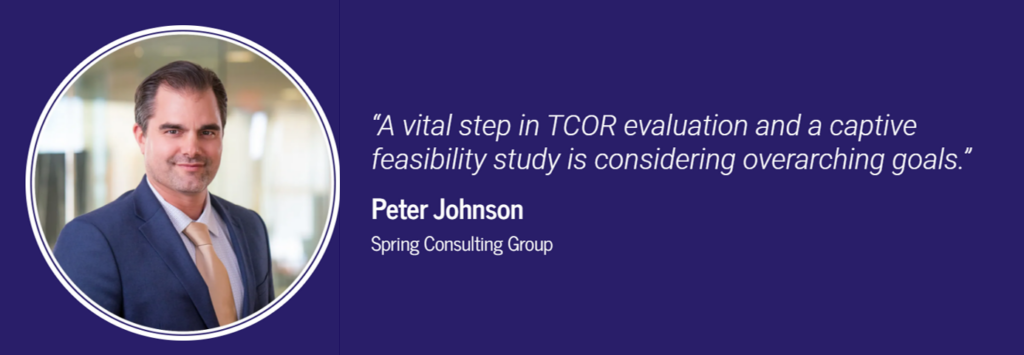
Building your TCoR
What constitutes TCOR varies across industries and company but regardless it can be backed by sophisticated risk management models as well as simpler calculations.
From a broad perspective, commonly overlooked considerations when it comes to tracking TCOR include:
- Beyond the frictional carrier or captive out-the-door premiums, other items budgeted for on the insured side such as safety programmes, loss control, and bonus programmes should be evaluated for inclusion or exclusion. If they are tracked within a captive premium (as is typically the case with loss control), such items are captured already so a company needs to be cognisant of not double-counting.
- Investment and underwriting income. Generally captives are priced to earn underwriting income and also earn investment income on the held assets to pay for unpaid claims. This income should be accounted for, which results in a lower TCOR.
- Softer costs such as risk management or safety personnel should be assessed for inclusion. Overall, consideration beyond obvious face-value expenses and including ancillary factors across the company provide a more robust calculation. Actuarial estimates of claims should be utilised for validation. Avoid relying solely on loss runs as this creates volatility because the third-party administrator (TPA) is typically only booking case reserves in the incurred claim estimates without factoring in the actuarial incurred but not reported development.
- Evaluation dates and look-back periods provide for quality tracking and the generation of trends, and should be assessed at various points in time. This is important when trying to compare the costs of various programmes related to budget and cash flow.
Perhaps most important is the need for year-over-year consistency regarding what is included in TCOR and what is excluded.
Who uses TCOR?
TCOR is meaningful to different stakeholders depending on the company, but these key audiences have important use cases for TCOR as follows:
- Risk managers leverage TCOR to show how they are approaching risk management and demonstrate how the company should retain risk, either through a captive premium or another method, as well as recommend what portion of risk should be transferred.
- Finance/accounting departments use TCOR to stress test and illustrate how much the organisation can afford and then plan for budgetary items that should reduce stated risk.
- Property and casualty (P&C) brokers care about TCOR because it enables them to benchmark and perform retention analyses in order to optimise programmes and mitigate volatility for their clients. TCOR allows them to make an apples-to-apples comparison year over year.
Trends and best practices
TCOR should not be touted simply because it sounds good. It needs to be grounded in analytics, formal reviews, and comprehensive reporting that outlines how TCOR is arrived at and what it means for your organisation. For large companies, TCOR may be factored into bidding, procurement, and contract processes. For smaller companies, there may not be enough critical mass to validate a self-funded approach, which means you’re more susceptible to market conditions and capacity.
From an organisational standpoint, TCOR plays a significant role in (i) accountability and compliance; (ii) making sure all assets, certificates of insurance, and contracts are listed; (iii) employees are accounted for; and (iv) there are no gaps in coverage that could change TCOR unexpectedly at the end of the year.
A vital step in TCOR evaluation and a captive feasibility study is considering overarching goals. If your company is looking to stay at cost, then moving to a captive may not always be the best play and you may be better off in the commercial market. This is why, as part of a TCOR analysis that is embedded within a feasibility study process as a means to reduce risk, alternative retentions in the market should be evaluated and the different scenarios to determine whether or not a captive makes the most sense outlined.

Other pieces of TCOR wisdom we have gathered over the years include:
- Fluctuations will happen from year to year, but some of the more volatile components are captive income and retained claims.
- A common misconception is that by increasing retention, lowering limits, or both combined, a reduction in TCOR will automatically occur. This may be true but is not necessarily so, as these practices could also expose the company to more risk than anticipated and that loss potential may not be appropriately projected.
- Consider this: with cyber and umbrella coverage becoming expensive for companies, let’s say you drop cyber entirely and lower limits to reduce TCOR by 5 percent. But then there’s a $3 million loss within that layer that would have been covered by policies you no longer have, so even though your budgeted TCOR went down by 5 percent, your realised TCOR increased by 10 percent due to the new loss.
- Analysis should consider different scenarios: what could happen, versus a straight-line evaluation.
- Ensure that at the time of increasing or decreasing a limit or removing a policy altogether, all parties agree to this move and it is documented to avoid questions after the fact.
- Benchmarking TCOR should be taken with a grain of salt, as practices are varied and factors such as captive versus no captive, geographic risk class differences, treatment of risk management admin costs, inflation and payroll may be working behind the scenes and can prohibit a direct comparison between two different organisations.
Conclusions
TCOR is complicated, but it is important to take a wide view of all the pieces of the puzzle, and then find the correlations and mitigation strategies available through the buying process. Captives need to understand how to budget for TCOR, how to build it at your organisation, and then how to interpret it year over year.
Strong TCOR practices can lead to improved risk management, smoother claims processes, and overall lower costs, especially for growing companies. A thoughtful TCOR approach serves to unify all your insurance stakeholders, from risk managers to CFOs, in understanding insurance spend and ultimately the total cost of risk.
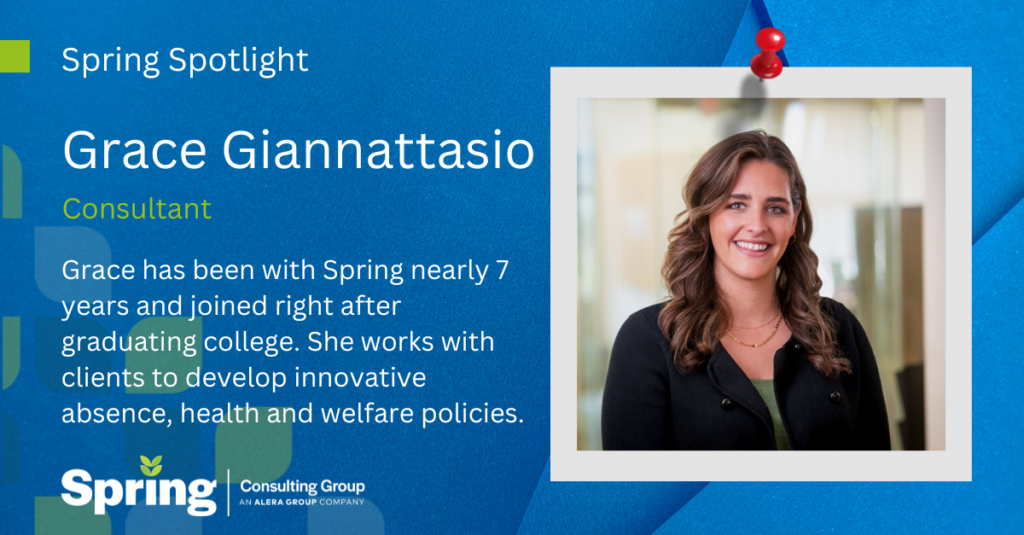
Title:
Consultant
Joined Spring:
I joined Spring in July 2017, shortly after I graduated from college.
Hometown:
I was born in Maine but grew up in Stockton, NJ. It’s a really small town and my elementary school only had about 60 people in it total.
At Work Responsibilities:
I work on our Absence Management Team and primarily help clients with their absence policies, as well as health and Rx plans. I also spend a lot of my time monitoring the paid leave landscape and updating our clients on legislative developments that may impact their leave programs throughout the country.
Outside of Work Hobbies/Interests:
I recently moved back to NJ and spend a lot of my time with my family and dogs, reading, and exploring my new neighborhood.
Fun Fact:
I spent a semester studying abroad in Cape Town, South Africa!
Describe Spring in 3 Words:
Dedicated, Invested, and Fun
Favorite book (or one you’ve recently read):
I just finished All The Light You Cannot See. I don’t think I can pick an overall favorite book.
Pets:
My family dog Scout (Chocolate Lab) and my “nephew” Alan (Red Lab) but I consider them mine 😊

Captive International has released the winners for the 2023 US Awards. Spring is proud to announce that our Managing Partner, Karin Landry won the Best Feasibility Study Individual. We were also highly commended for Best Actuarial Firm, Top Feasibility Study Firm, and Top Captive Consulting Firm. Our team was also highly commended for the following: Best Individual Captive Consultant (Karin Landry & Prabal Lakhanpal), Best Individual Feasibility Study (Prabal Lakhanpal) and Best Actuary (Peter Johnson & Nick Frongillo).

